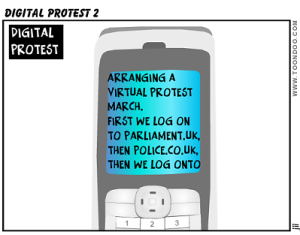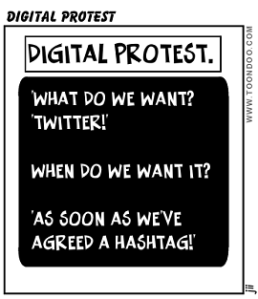 Welcome to the the next instalment in my series of social media tips. These are aimed primarily at a police audience, but hopefully applicable to a wider group of people too, especially those in the public sector. This series of posts will aim to identify some good practice and useful hints and tips for police officers and staff to consider when using social media.
Welcome to the the next instalment in my series of social media tips. These are aimed primarily at a police audience, but hopefully applicable to a wider group of people too, especially those in the public sector. This series of posts will aim to identify some good practice and useful hints and tips for police officers and staff to consider when using social media.
Part 12: Even More Operational Uses
Parts 10 and 11 of the handbook tackled using social media in public order and major investigations. As I said there, I hear a lot of scepticism about whether it is any use operationally – so called ‘real policing’.
Intelligence
Early adoption of social media can pay dividends when looking for intelligence. Whether it is in response to community concerns, seeking witnesses to identify graffiti tags, or in getting an early heads up on protest marches, social media has a part to play alongside traditional methods of policing.
Policing of Protests
 One of the best examples of using social media in policing of protest marches was for an English Defence League (EDL) march in the West Midlands. The tweets below are from the EDL supporters, the general public and the police, and use the #EDL hashtag so people can follow the conversation. The police simply use the same hashtag to talk to those involved.
One of the best examples of using social media in policing of protest marches was for an English Defence League (EDL) march in the West Midlands. The tweets below are from the EDL supporters, the general public and the police, and use the #EDL hashtag so people can follow the conversation. The police simply use the same hashtag to talk to those involved.
The conversation starts with EDL supporters drumming up support for their march:
EDL >Protest in Dudley today, come and support #EDL
This is then picked up and ReTweeted by the public to their followers, spreading the message:
Public >RT Protest in Dudley today, come and support #EDL
Then it starts to get interesting…
EDL >Muslims with knives rioting in Dudley #EDL
Public >RT 100s Muslims with knives rioting in Dudley – get here! #EDL
At this stage things look like they are getting out of hand.
Police>There are no Muslims rioting in Dudley – all quiet #EDL
Public >RT police say There are no Muslims rioting in Dudley – all quiet #EDL
Notice how the police clarification is spread by ReTweets by the public. Then the EDL supporters try again:
EDL >#EDL supporter stabbed by Muslim in DudleyPublic >RT #EDL supporter stabbed by Muslim in Dudley – come and support usPolice>#EDL no one stabbed, this is misinformation. Follow for accurate facts
At this stage the public start to realise who is the trusted source in this conversation:
Public >#EDL misinformation being spread by EDL – listen to police tweetsPublic >#EDL police say no one has been stabbed- EDL lying
That doesn’t stop the EDL supporters trying again:
EDL >#EDL police allowing muslims to attack whites in DudleyPolice>#EDL no one has been attacked in DudleyPublic >#EDL don’t react to EDL lies – police say no one been attackedPublic >#EDL thank you police for accurate tweets
As you can see this time the public are not fooled. A number of forces have since used similar tactics to talk to march organisers and participants in real time as the event occurs. Nick Keane from the NPIA likes to say ‘imagine that the police voice was missing, and how the conversation might have changed then‘.
Other parts: Part 1:What Social Media Networks should I use? Part 2:How do I get followers / friends ? Part 3:Policy / Strategy / Guidance Part 4: Ten things to have on your page to drive up interest Part 5: What to do when things go wrong Part 6:We don’t do that here Part 7: Twitter and Flick’r Part 8: Link it all together Part9:Talk to Local People Part10:Operational Uses Part 11:More Operational Uses Part 12:Operational use – Policing Protest

Pingback: Social Media Handbook for Police: Part 13 | Partridgej's Blog
Pingback: Social Media Handbook for Police: Part 11 | Partridgej's Blog
Pingback: Social Media Handbook for Police: Part 10 | Partridgej's Blog
Pingback: Social Media Handbook for Police: Part 9 | Partridgej's Blog
Pingback: Social Media Handbook for Police:Part 6 | Partridgej's Blog
Pingback: Social Media Handbook for Police: Part 8 | Partridgej's Blog
Pingback: Social Media Handbook for police: Part 7 | Partridgej's Blog
Pingback: Social Media Handbook for Police: Part 5 | Partridgej's Blog
Pingback: Social Media Handbook for Police: Part 4 | Partridgej's Blog
Pingback: Social Media Handbook for Police: Part 3 | Partridgej's Blog
Pingback: Social Media Handbook for Police: Part 1 | Partridgej's Blog
Wonderful and informative series and blog.